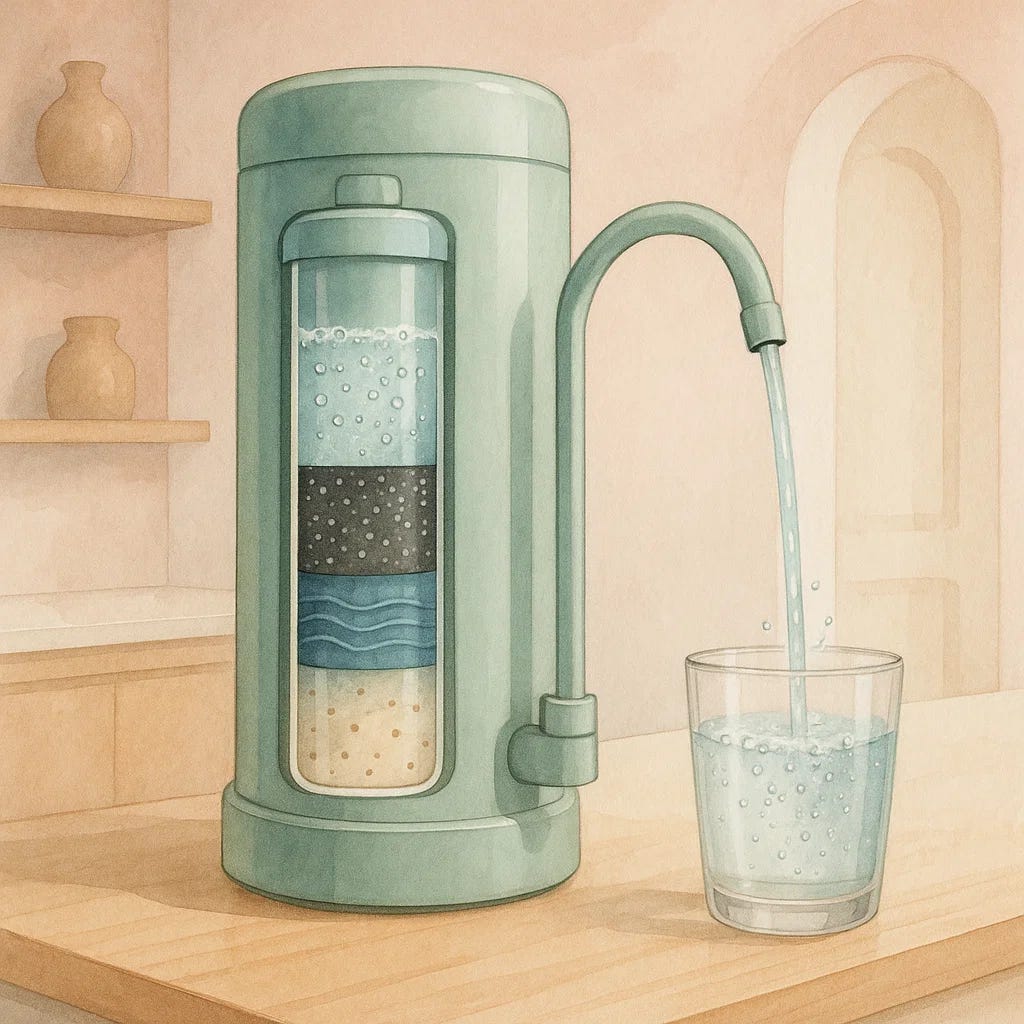Tap Out: Why Your Water Might Be Letting You Down
I don’t drink tap water.
It’s not because I’m overly cautious or picky—it’s because
I’ve learned what’s actually in it.
Living in the western world, we often assume our water is clean and safe, unlike in developing countries. But the truth is, our tap water is far from clean. It’s often laden with chemicals, pharmaceutical residues, and even microplastics.
Recent events in the UK have highlighted these issues.
In November 2024, residents in Herefordshire were warned not to drink their tap water due to harmful bacteria found during routine tests. (bbc.co.uk)
And it’s not just about bacteria. Tap water often contains other contaminants that can affect our health over time.
What’s in Your Tap Water?
Even when water meets safety standards, it can still contain harmful substances, including:
❌ Chlorine and Byproducts: Chlorine is added to disinfect water, but it reacts with organic matter to form trihalomethanes, which are linked to cancer.
❌ Heavy Metals: Lead, mercury, and arsenic can leach into water from old pipes, posing risks to brain development, especially in children.
❌ Pharmaceutical Residues: Studies have found traces of medications, including antibiotics, painkillers, and hormones, in municipal water supplies.
❌ Microplastics and PFAS: Emerging contaminants that disrupt hormones and have been linked to fertility issues and immune suppression.
It’s not just about drinking the water—contaminants can also affect you when absorbed through your skin.
🫣 Skin Absorption: During bathing or showering, your skin acts like a sponge, soaking up chlorine and other chemicals. Over time, this can contribute to dry skin, irritation, and even hormone disruption.
🫣 Long-term Health Risks: Prolonged exposure to contaminants has been linked to immune system suppression, chronic illnesses, and hormonal imbalances.
🫣 Environmental Exposure: PFAS, or “forever chemicals,” and microplastics are concerning because they accumulate in the body, and are linked to serious health risks like hormonal disruption, immune suppression, inflammation, and even cancer.
While PFAS take years to break down or leave the body, microplastics may also linger in tissues, with their long-term effects still under study.
Filters: The Way Forward, But With Care
Filtering your water is one of the best steps you can take for cleaner, safer water. Whether it’s a whole-home filtration system, a countertop unit, or shower filters, filtering reduces contaminants like chlorine, heavy metals, and PFAS.
However, filters aren’t without their challenges:
💧 Mineral Removal: Advanced systems like reverse osmosis (RO) can strip water of beneficial minerals like calcium and magnesium, which are crucial for health. If you choose RO, it’s important to remineralise your water using cartridges, salts or drops.
💦 Maintenance Matters: Filters can become breeding grounds for bacteria if not cleaned or replaced regularly. Whole-home units, in particular, require careful adherence to maintenance schedules to remain effective.
Personally, I prefer countertop RO systems that are over the counter or smaller under-counter units where water doesn’t sit stagnant. The same applies to whole-home systems—following maintenance guidelines is non-negotiable for keeping your water truly safe.
Clean water is the foundation of good health—so it’s worth getting it right.
In future posts, I’ll dive deeper into water-related topics, like water structuring and energising your water (yes, that’s a thing!) But for now, let’s keep it simple: clear water is the basic, non-negotiable starting point.
So, ditch the dodgy tap water, get a filter you trust, and start sipping (and showering) smarter. Because whether it’s in your glass or on your skin, clean water is an investment your body will thank you for.







